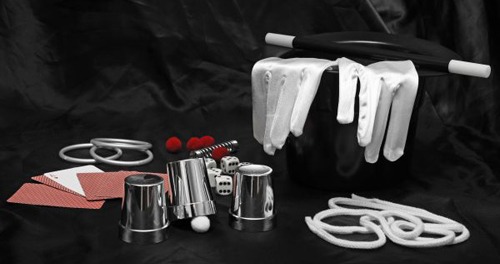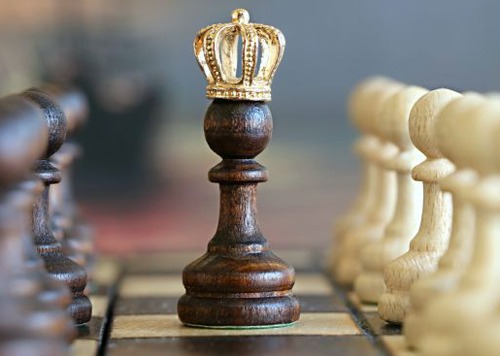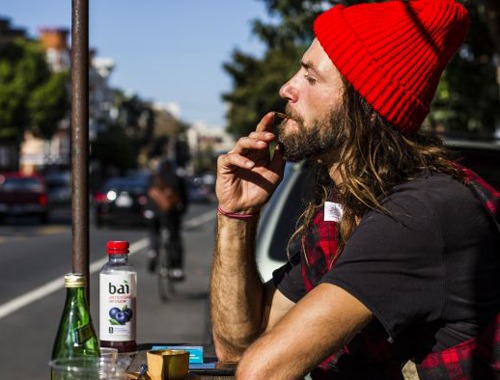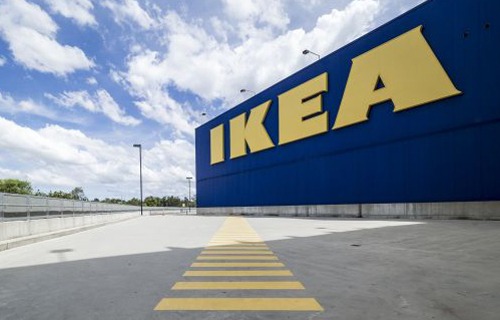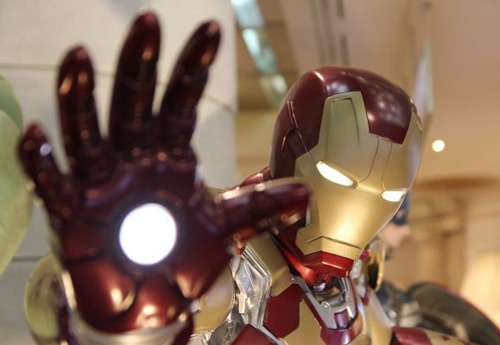by Noel Jerke (Author) |
There are small and large businesses in almost every industry, and they’re all focused on presenting their offerings in a way that makes them stand out. They want to stand head and shoulders above the competition, which is why they place so much importance on developing a brand.
From a marketing point of view, an archetype means the symbol or genre that a brand denotes. With a well-established archetype, even a small company can anchor itself against the larger corporations.
This eBook on ‘Brand Archetypes’ strives to explain and explore the various business personalities or traits that might appeal to different audiences. Not only this, but it also helps readers understand the brand archetypes, how they were developed, and how to use them for marketing. After a quick quiz, we get down to the following chapter topics:
Chapter 1- What is an Archetype?
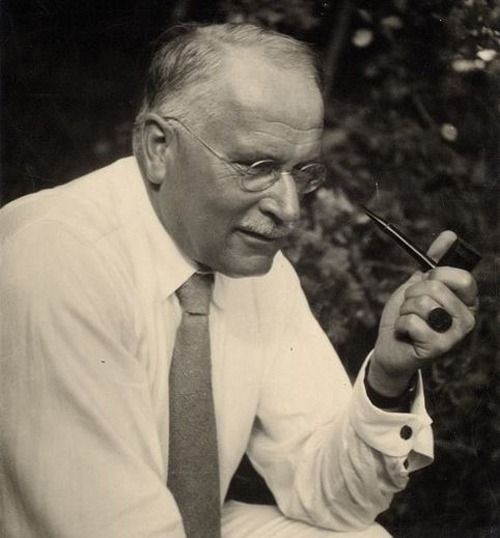
The first chapter starts with how essential it is for a modern business to make their mark. When we go online, turn on the TV, or simply walk down the street, there are several advertisements and deals vying for our attention. If a company wants to survive within this information overload, they have to go above and beyond the traditional methods.
Before we start talking about the kinds of archetypes, it makes sense to delve a little into the history of the concept. With this goal, the chapter summarizes the work of Carl Jung in this regard. Jung is best known for founding analytical psychology. He also named the various psychological archetypes, which may come in handy for a company’s marketing today. According to Jung’s research, archetypes serve as the model trait that many people identify with. These are similar to the myths, fables, and stories that every culture seems to have to some extent.
The concept of archetypes can be divided into 12 categories, which Jung named as the following:
- The Sage
- The Innocent
- The Explorer
- The Ruler
- The Creator
- The Caregiver
- The Magician
- The Hero
- The Rebel
- The Lover
- The Jester
- The Orphan
When it comes to developing a brand, the aim of any company is to determine which archetype their target audience is and what it’s looking for. This way, they can better create a marketing strategy that will pull at the emotional desires of their potential clients/customers and help them relate to the brand.
The archetype one chooses for their company also influences the image they present. The eBook here gives an example of a security company; it can either brand itself as a Caregiver to attract people who want protection. They might also market themselves as the Hero, inspiring those who admire winning, honor, strength, etc.
Chapter 2- The Sage
The second chapter starts the discussion of the 12 brand archetypes. It focuses on the Sage category. These are basically people who focus on obtaining knowledge and understanding it. The characteristics that define this archetype include:
- A motto of ‘the truth shall set you free’
- A driving desire for the truth
- A goal of undertaking the world
- A fear of being misled or being in ignorance
- A strategy to seek knowledge, including self-reflection
- Weakness of only studying and not acting upon the knowledge they have
- Talents of wisdom and intelligence
Businesses with a Sage-like brand are more focused on raising awareness and bring more information to the masses. One helpful practice is to divide the Sage brand into 3 levels. These are:
Level 1: Hunting for the truth by seeking out experts in a particular file
Level2: Becoming an expert yourself using analysis, data, critical thinking, peer reviews, etc.
Level 3: Achieving the expert status, getting enough knowledge so that their potential customers don’t question their status.
Google is the perfect example of a Sage brand. It has even seeped into a common everyday verb, as people talk about ‘Googling’ something when they need information. Mayo Clinic, CNN, and other such companies also fall into this category. Educational institutions, museums, libraries, news, and search engines are the kinds of industries where the Sage archetype will probably work best.
In a nutshell, the motivations of this brand include: intelligence, expertise, information, wisdom, skill, and influence.
Just a few of its challenges include: haughtiness, insensitivity, risk of misinformation, etc.
The strategy of such brands is to give guidance to its consumer base, and focus on increasing awareness, knowledge, expertise, and so on. The excerpt below gives a nice summation of what the Sage brand does:
…tailors itself to companies that shed light on previously unknown information, which creates excitement within their customer to begin a journey of life-long learning. The Sage delights in knowing all and educating all, no matter who they are, for knowledge is their true joy. (eBook Excerpt)
Chapter 3- The Innocent
The Innocent brand will focus mainly on simplicity and conciseness. Whatever their customer base needs, they will strive to provide as sincerely and simply as possible to gain trust. One may also call this a utopian or traditional sort of brand.
The key characteristics of this brand are:
- A motto that they are young, free, etc.
- The driving desire is to attain paradise (in the case of marketing, probably satisfaction)
- A goal of happiness
- Fear of punishment after doing wrong
- A strategy to get things right
- A weakness of possible boredom due to naivety
- A talent of faith, positive thinking, etc.
Brands with the innocent archetype will represent hope, faithfulness, humility, and honesty above all. They assume that everyone is ‘young and free’ and that this feeling is to be maintained as much as possible. They will present a pure image of themselves to customers.
There are three levels to this brand as well. These are:
Level 1: A belief, perhaps immature, that everyone should have total happiness
Level 2: shows their customers how they can lead a simpler yet happier life with a mindset shift
Level 3: Teaching that happens emits from inside, with the brands only helping people learn the truth.
Dove is an example brand that represents the Innocent archetype. It centres on happiness, simplicity, inner beauty, real beauty, etc. Cleanliness and purity are other archetypal innocent traits that Dove presents to its audience.
There might also be challenges to such representations, such as possible delusions and unrealistic expectations.
Organizations that offer beauty products, organic foods, healthy foods, baby products, and similar industries will probably fit into this brand archetype. This excerpt says it best:
If your business’s products are designed to bring happiness and a sense of contentment to your customers, then the Innocent archetype is the best one to use. (eBook excerpt)
Chapter 4- The Jester
The aim of companies with the Jester archetype is to make people smile, laugh, and generally be optimistic. Their key characteristics include:
- A motto that you just live once
- A driving desire to enjoy the current moment
- Goal of having fun
- Fear of boring people or getting bored’
- Strategy to be funny
- Weaknesses include wasting time
On the surface, a Jester might seem like all fun and games. However, there’s a deeper meaning; it’s all about putting this into a new perspective. The jester brands want to make themselves relatable, especially when it comes to serious subjects. The three levels here include:
level 1: live for joy and fun
Level 2: Living for joy but also having intelligence
Level 3″ Realization that success is enjoying and appreciating the movement.
Insurance companies might take this strategy, especially since they have some very serious subject matter to deal with. One example is Geico and its use of a gecko as its mascot. While such marketing can be funny and have positive vibes, it also runs the risk of being offensive and even annoying at times.
Chapter 5- The Caregiver
The main goal of a Caretaker archetype is to ensure health and wellbeing. Industries and companies like this focus on serving others with the following traits:
- A motto of loving others
- Wanting to protect others
- Helping others
- Fearing ingratitude and selfishness
- Weaknesses including vulnerability to exploration
- Talents including generosity and compassion
Caregiver brands will usually not solely aim to make money. They want to help their clients, exercise self-care in order to take better care of others, and finally fully commit to helping the greater good.
The most common example of such organizations is The Salvation Army. They are committed to helping, supporting, and understanding everyone all over the globe. Other establishments in healthcare, support services, NGOs, foundations, and so on also fall into this archetype.
Chapter 6- The Lover
The main aim of the Lover archetype is that of creating relationships and making others feel special. The key characteristics include:
- Desiring intimacy and experiences
- Goal of being connected with this one loves most
- Fearing being unwanted or unloved
- Planning to becoming attractive to the audience
A company with this archetype will try to enhance the bonds they already have with their existing clients, while also wanting to attract new ones. They will focus on aesthetics a lot, and ultimately want the customer to feel wanted, desired, and attractive.
The three levels of a Lover brand start off a bit superficial. The first level establishes only temporary, impersonal connection; the second one is more about profound relationships; and the third focuses on genuine, healthy relationships.
Chanel and just about any high end fashion/makeup brand belong to this category. Some might evoke a sense of mystery, sensuality, passion, indulgence, love, and closeness. However, the challenges here include coming off as fake or exploitative.
Chapter 7- The Magician
This archetype is one that strives to offer something completely unique, special, and above the common everyday stuff. The core of such brands is all about transformation.
The Magician uses what knowledge there is in the world to create wonders. It aims to inspire awe amongst its customers. (eBook excerpt)
The major traits here include:
- Making things happen
- Wanting to understand the universe
- Developing a vision
- Vulnerable to becoming exploitative
- Making complicated concepts seem simple
Simply put, the companies with the archetype want to make their clients’ dreams come true. To do this, they have to establish trust as well. One major downside or challenge of such companies is that they might not be able to follow through on their lofty goals.
The levels of the Magician archetype are:
- A fleeting sense of wonder
- Establishing some flow
- Delivering the vision in the best way possible
When we think of magic today, the brand ‘Disney’ soon comes to mind, if not immediately. Many companies within the fields of technology (Apple), beauty (Oil of Olay) and entertainment (Pixar) also fall in the same archetype. However, they also risk becoming mundane and unimaginative if the innovations don’t keep coming.
Chapter 8- The Ruler
The main attribute of the Ruler is confidence. Such a company is sure about their products and backs it up in many ways. The key characteristic of such establishments included:
- Planning to exercise their power
- Focusing on creating a prosperous community
- A desire for control
- A weakness for being too authoritarian
Brands with these traits aim at an audience who wants a feeling of empowerment. The brand wants to seem noble, in control, and upstanding to the people.
The first level of this archetype focuses on having more responsibility. The second level is about leadership in any way, so that their offerings are among the best. The third level is when the brand is the leader of the market and community.
With a motto like ‘All of nothing’, Mercedes Benz is a good example of this archetype. Luxury hotel chains such as the Hilton or the Four Seasons are also Ruler brands.
The Ruler aims to be the best at everything they do, for they have promised to do so, and a good ruler never reneges on their promises. (eBook excerpt)
Chapter 9- The Outlaw
When a company desires change, it’s probably an Outlaw or Rebel archetype. Such brands usually have somewhat radical ideas that attract customers with their shock value. The main attributes of such setups include:
- Breaking rules
- Overturn the system if it doesn’t work
- Desires for revenge, revolution, or other types of change
This marketing style is a bit rare, since it’s not very comfortable for anyone involved. One good example of such brands is anything related to motorcycles. More brands manufacturing motorcycles usually market it as a form of rebellion.
The level of the Outlaw involves a realization that something is wrong. The second level occurs when there’s any inciting behaviour that people remember. Finally, the brand becomes a sort of revolutionary who can cause actual change. Apart from motorcycles, the example of Mountain Dew is also applicable here.
Chapter 10- The Creator
This archetype includes brands that encourage imagination. They are also the brands that appeal to inventors, artists, writers, musicians, and innovators. The attributes include:
Helping people feel able to express themselves
- Desire to create something that will endure
- Wanting to develop artistic skills
- Vulnerable to perfectionism
There is a definite difference between the Outlaw and the Creator:
Businesses that use this marketing archetype are generally very non-conforming to the status quo. But, unlike the outlaw, they do not desire to buck the system or experience feelings of rebellion. Instead, freedom is required for self-expression intrinsic to a Creator. (eBook excerpt)
Some examples of such brands are LEGO, Crayola, YouTube, and Pinterest. These focus on enhancing the creativity and originality of their customers, unlocking imaginations, and so on.
Chapter 11- The Explorer
Brands in this archetype have a two-pronged aim–independence and contentment. This is why they want self-development and strive to answer deep questions. The key characteristics of these organizations include:
- A reluctance to be fenced in
- Wanting to gain freedom by exploring everywhere
- Fear of being trapped and being forced to conform
The Explorer is a sort of pioneer and strives to embody determination, grit, and bravery. The first level involves travelling, the second turns the exploration inward. The third occurs when the Explorer finds what they’ve been seeking.
Brands that literally cover exploring are relevant here. These include Jeep, NASA, North Face, and National Geographic.
Chapter 12- The Everyman
The Everyman or Citizen archetype focuses on the everyday, the solid, and the relatable. The attributes include:
- Equality
- Desire to connect with others
- Wanting to fit in
- Wanting to develop something in common with everyone
- Realism and empathy
The marketing for such brands usually appeals to those who find comfort in routine, everyday culture, and comfortable language. Along with ads, such businesses also use refund policies and use other ways to establish trust. Just a few examples include IKEA, Wendy’s Home Depot, Target, and other similar organizations.
Chapter 13- The Hero
Such brands inspire their audience to be better, enact change, and find a way to get the required solution. Its key attributes include:
- Wanting to prove their worth
- Aiming to improve everything
- Fearing weakness, being labelled a coward
The Hero archetype has three levels. It starts with facing a lot of challenges to become the Hero. The second level is where one achieves a certain level of success. Finally, the Hero shows sacrifice and servitude.
Nike just might be the most famous example of this archetype. Their marketing showcases a lot of success, but only after a lot of sacrifice and hard work.
Chapter 14: Determining the Right Brand Archetype for Your Organization
The eBook’s final chapter concludes with how archetypes aren’t just about targeting audiences. They are for appealing to the target market by identifying with them. Plus, businesses can start out as one archetype and become another as time goes by. Apple is a good example of this, starting out as a Magician, then becoming an Outlaw, then Creative, and now can probably be placed in the Caregiver category.
Conclusion
If someone is looking for a marketing strategy guide and wants to know how to connect with their intended clients, this book on brand archetypes is a useful read. It covers every aspect of each archetype in an interesting and informative manner. Some of the archetypes are even surprising when we think of them in connection to a business–such as the Lover or the Caregiver brands. However, the examples, characteristics, motivations, challenges, and strategies for each category are outlined very clearly. With this detail, any entrepreneur or company manager can learn a lot about identifying their business and effectively connecting with their target audience.









